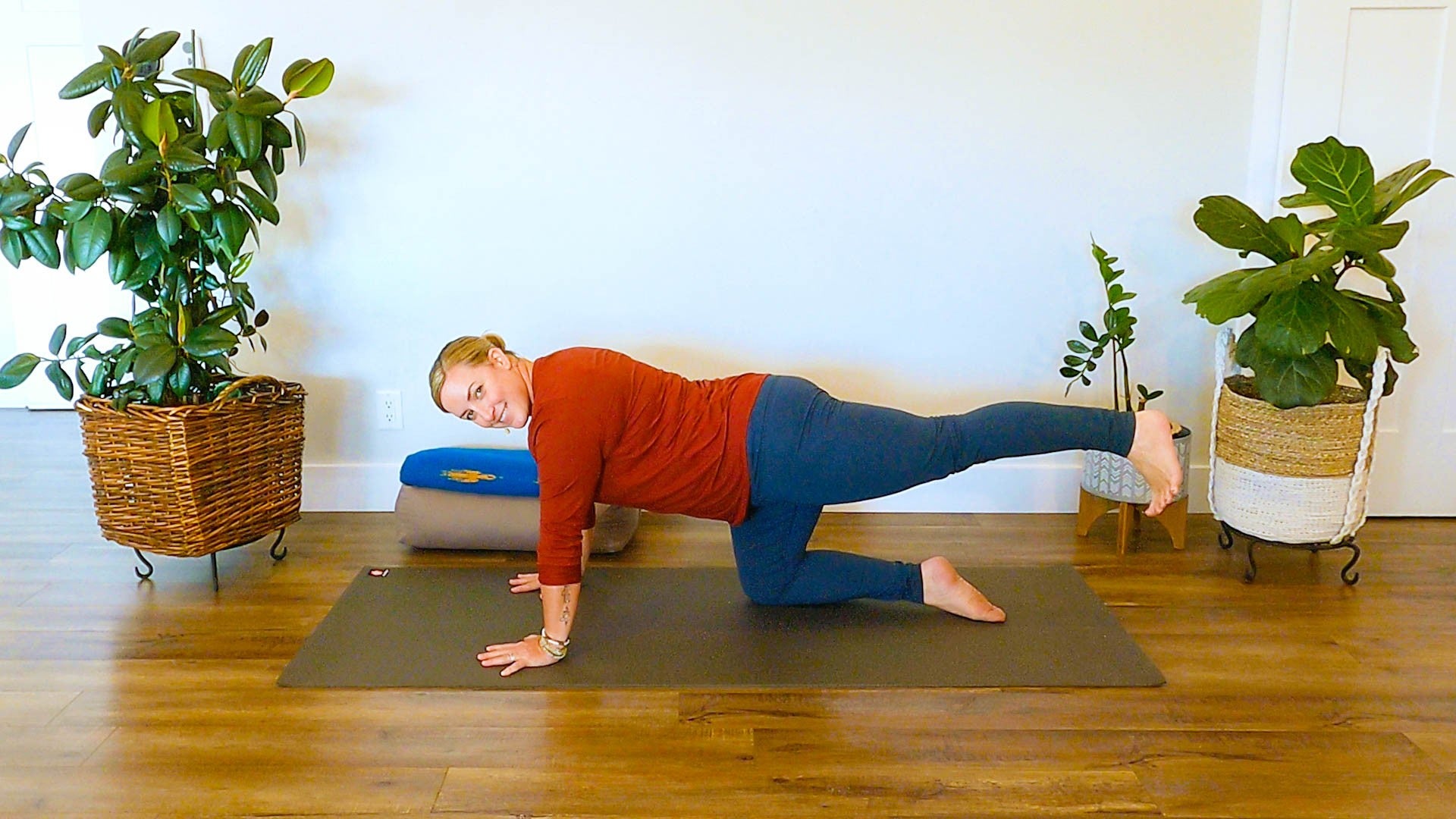
Easing Sciatica Pain
I recently reached out to a physical therapist friend of mine about sciatica and she immediately broke her normal anatomy-laden nerd-speak and started using words like “elusive” and “mysterious” and “invisible”. I remember having a surreal moment on the phone. Were we still talking about the same thing? I was questioning her about the sciatic nerve and she seemed to be talking about woodland fairies.
But those who have sciatica may agree with her choice of esoteric adjectives. For many, pain from sciatica seems to ambiguously move around the lower half of the body – dissolving here and remerging there – in what could be charted as a puzzling course.
The bilateral sciatic nerves begin in the low back, merging into the gluteal region of our backsides, and then run down the back of both legs, ending approximately just below the knees. Sciatic pain can be felt anywhere along this anatomical chain (usually on one particular side, but occasionally on both) and sometimes the nerves even feed the discomfort further downstream to cause sensations in the calf or the foot. In rare, more desperate cases sciatica can even cause pelvic issues disrupting bowel response.
But wait, before we focus on all that could possibly go wrong, let’s consider the fact that the sciatic nerve is not out to get us.
This realization came clear to me during a discussion with my four-year old the other day when she asked if sharks are dangerous. “They can be,” I told her, “but only when provoked.” The same holds true for the sciatic nerve: it only inflicts pain when it’s irritated or pressured.
Since nearly 40% of the population will be affected by sciatica to varying degrees at some point in life, the sciatic nerve often, like sharks, has a menacing connotation – like it’s out there lurking and stalking us. We perceive the sciatic nerve as the “bad guy” when truly it is just as much the victim as the person feeling the pain.
Sciatica occurs when there is an irritation of the sciatic nerve. The sensation that occurs with this irritation is described as burning, electric, pins-and-needles, and/or numbing. As we trace and explore these aches in an effort to heal, it would be helpful for us to note that sciatica is not the true source of our pain.
Consider that sciatica is the condition and not the origin of our affliction. We can’t just blame the sciatic nerve; we must dive deeper than that.
Possible sources of the condition known as sciatica could be complications with the vertebral column – say, a herniated disc or spondylolisthesis or spinal stenosis. These spinal conditions create the tension, misalignment, or inflammation that render unusual pressure on the sciatic nerve.
And yet sciatica is not single-handedly caused by diagnosable spinal issues. There are other plights that can be the source of an irritated sciatic nerve. Certainly, the natural aging process plays a role in increasing the odds of sciatica. Weaker bones and degenerating discs combined with the propensity to have less diverse movement as we age undoubtedly intensify the chances of sciatica.
And then there are circumstances like diabetes (which increases the odds of nerve damage), smoking (which increases the potential of spinal degeneration), obesity (which can add undue stress to joints or muscular tissue), occupational hazards (jobs that require heavy lifting), and, of course, the mundane but infamous sedentary lifestyle.
I find it worth noting that every article I read as I researched sciatica made the promise that a sedentary lifestyle can greatly increase your chances of irritating the longest nerve in your body.
Yup, that’s right. The sciatic nerve is the longest and also the thickest nerve in the body – at times, reaching a diameter of a hefty “finger-width”. Herein lies the long and thick problem. Because the sciatic nerve covers a broad swath of territory in the lower half of our bodies, it can wreak havoc on a broad swath of our anatomy if neglected.
The sciatic nerve originates from five nerve roots – meaning that five smaller nerves come together to form the sciatic nerve. Two of the nerve roots begin in the lumbar spine and three of the nerve roots begin in the sacrum.
This gives you an idea of where the longest nerve in the body originates and also where the pain of sciatica often congregates. The discomfort usually begins in a more centralized location radiating from the low back region, but because the sciatic nerve is so long the pain can travel along the path of the nerve and cause discomfort somewhere else along the chain (or along the entire chain).
I have never personally dealt with sciatica, but it became a keen interest of mine when a multitude of students washed up on my yoga shores with this condition. Particularly, when one of my favorite students – my dad – was diagnosed with spondylolisthesis after enduring debilitating pain from sciatica.
Turns out, the stretches we found to help my dad relieve his pain were poses and movements that are great for all of us - whether we have low back pain or not. Most of the stretches were relatively easy (certainly nothing in the vein of aggressive or sweat-inducing) and I can honestly say that my father and I both walked away from our simple “sciatica sessions” feeling relieved and renewed.
Even my non-believing, orthopedic-surgeon dad will attest that these nurturing spinal exercises won him over by not only relieving the pain in his hips, legs, and back but also by establishing in him a sense of calm that he had never felt from all those years standing hunched over patients in the operating room (hence, his back issues).
There is just something about focusing on movements for the low back, pelvis, and hips – the hub of your body – that makes everything feel re-integrated, balanced, and centered. When you clear the intersection of the pelvic region, it feels as if the highways of blood vessels, rivers of meridians, and trails of fascial pathways are flowing freely, and this decongestion is blissful.
The bottom line: it is our job to take care of our spines. Not the other way around. And when spinal issues arise in our bodies, we are far more likely to cultivate the blooming discomfort of sciatica.
To keep a spine healthy, we need to use it. Move it. Extend it. Flex it. Twist it a bit. Take it through its full range of joint movements and rotations to ensure that these locomotive patterns remain available to us. The Mayo Clinic offers the simple 3-pronged advice to “exercise regularly”, “maintain proper posture when you sit”, and “use good body mechanics”.
Remember, this is the nervous system we are trying to support as we heal sciatica. We can’t be in a rush – rushing only makes the body feel more stressed and carry more tension. Let’s enjoy deep breaths as we encourage our low backs and sciatic nerves towards health. Easy does it. More often and gently, as Papa Schiffmann reminds us.
It may sound cheesy, but with sciatica – whether healing or preventing – compassion is key. It’s a beautiful thing to find compassion for our tissues during routine exercises on the mat. Let’s not add more pressure to them by blaming them. Instead, let’s appreciate these impressive nerves, find a way to love them, and do all that we can to take care of them.
Comments
No comments yet. Be the first!












You need to be a subscriber to post a comment.
Please Log In or Create an Account to start your free trial.